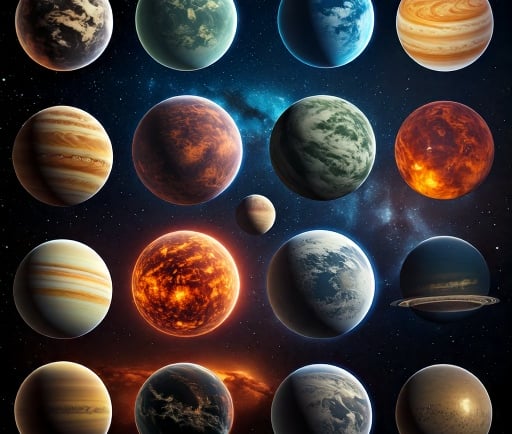The Diverse Atmospheres of Exoplanets: Hot Jupiters, Super-Earths, and More


Introduction to Exoplanet Atmospheres
The study of exoplanets has become one of the most exciting fields in modern astrophysics. Among the various categories of exoplanets, hot Jupiters, super-Earths, mini-Neptunes, gas giants, and ice giants represent a fascinating array of planetary types, each exhibiting unique atmospheric characteristics. Understanding these atmospheres provides invaluable insights into their formation, evolution, and potential habitability.
Hot Jupiters: The Fiery Giants
Hot Jupiters are massive exoplanets that orbit very close to their host stars, resulting in extremely high surface temperatures. These gaseous giants often possess thick atmospheres composed primarily of hydrogen and helium, along with traces of heavier elements. The intense heat can lead to atmospheric conditions such as strong winds and cloud formations consisting of exotic materials like silicates and iron, creating a striking visual dynamic. The study of hot Jupiter atmospheres is crucial, as it helps scientists understand the effects of proximity to a star on atmospheric retention and composition.
Super-Earths and Mini-Neptunes: The Intermediate Players
Super-Earths and mini-Neptunes are intriguing in that they lie between terrestrial planets and gas giants in size and mass. The atmospheres of super-Earths can vary significantly based on their distance from their host stars and their compositions. Some exhibit thick atmospheres rich in hydrogen or methane, while others may possess solid surfaces beneath thinner gaseous layers. Mini-Neptunes, on the other hand, often have similar compositions but may retain a higher proportion of volatiles, leading to varied atmospheric pressure and temperatures. The diverse atmospheric characteristics of these two classes of exoplanets raise important questions about their potential for harboring life.
Gas Giants and Ice Giants: The Cold and the Hot
Gas giants, such as Jupiter and Saturn in our solar system, have atmospheres dominated by hydrogen and helium, often with active weather systems. In contrast, ice giants like Uranus and Neptune have atmospheres that are rich in water, ammonia, and methane, giving them a distinct bluish hue. The presence of ices and varying atmospheric temperatures results in vastly different climate dynamics. Understanding these differences in atmospheric composition and behavior across gas giants and ice giants in the exoplanetary context is vital for comprehending the role of these planets within their systems.
Conclusion: The Significance of Atmospheric Studies
In conclusion, the diverse atmospheres of various types of exoplanets - including hot Jupiters, super-Earths, mini-Neptunes, gas giants, and ice giants - offer fascinating insights into planetary science. By analyzing the atmospheric conditions of these distant worlds, researchers can ascertain their potential for supporting life and improve our understanding of planetary systems as a whole. As technology advances, the continued exploration of exoplanets will only deepen our knowledge and appreciation of the universe we inhabit.
